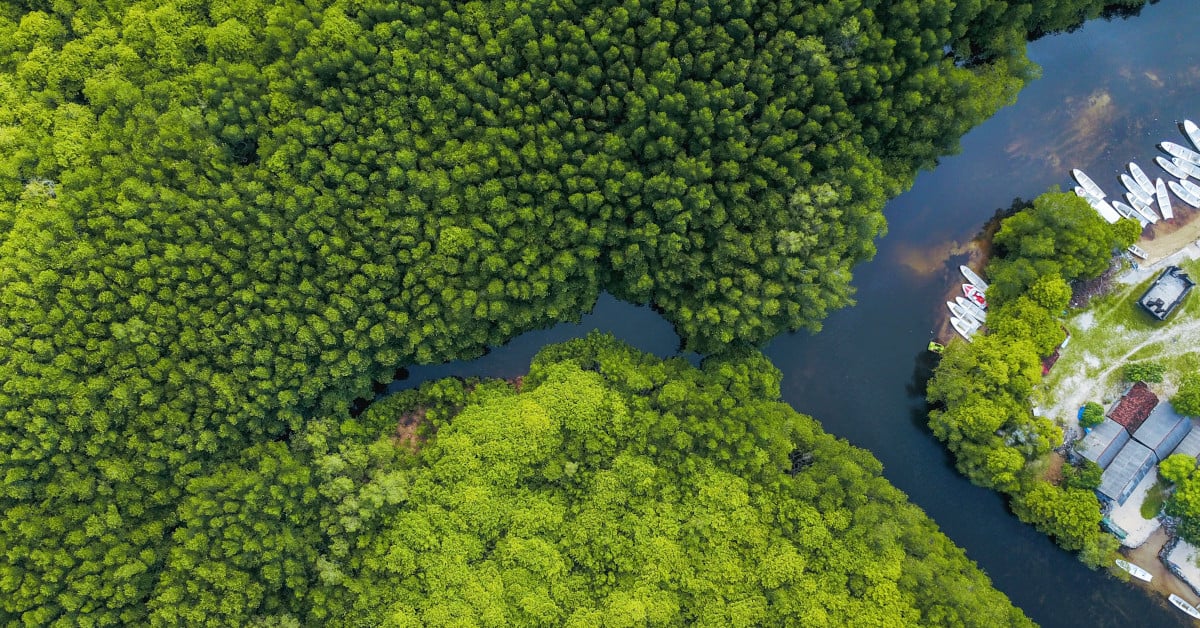EPA Submits Draft Report with Definition of “Waters of the U.S.”
Water has innumerable purposes in people’s daily lives. Water is not only for drinking, but is also an important component of the economy, supporting industries such as real estate, fisheries, tourism, and agriculture. Protecting the integrity of water bodies is fundamental to people’s safety and to sustaining biodiversity. By protecting headwater streams for example, people are kept safe from floods as they collect rainfall. Safeguarding waters also preserves the habitat of waterfowl along with those of aquatic plants and animals.

By Angela McIntire
November 22, 2013
 Water has innumerable purposes in people’s daily lives. Water is not only for drinking, but is also an important component of the economy, supporting industries such as real estate, fisheries, tourism, and agriculture. Protecting the integrity of water bodies is fundamental to people’s safety and to sustaining biodiversity. By protecting headwater streams for example, people are kept safe from floods as they collect rainfall. Safeguarding waters also preserves the habitat of waterfowl along with those of aquatic plants and animals.
Water has innumerable purposes in people’s daily lives. Water is not only for drinking, but is also an important component of the economy, supporting industries such as real estate, fisheries, tourism, and agriculture. Protecting the integrity of water bodies is fundamental to people’s safety and to sustaining biodiversity. By protecting headwater streams for example, people are kept safe from floods as they collect rainfall. Safeguarding waters also preserves the habitat of waterfowl along with those of aquatic plants and animals.
One mechanism that Congress adopted to achieve the protection of water bodies across the United States is through the promulgation of the Clean Water Act (CWA) of 1972. Through its provisions, the amount of pollutants in streams, lakes, rivers, wetlands, and other waterways are reduced, thereby preventing any alteration in the chemical, physical, and biological makeup of water bodies and the destructive impacts that such changes bring. Primarily, the CWA is a federal law that protects the “waters of the United States” which in turn mainly pertains to “navigable waters” or “downstream waters”.
However, over the past two decades, varying interpretations and decisions from the Supreme Court have “muddied the  waters” so to speak, regarding the water bodies that are protected by this federal law. In line with this, the uncertainty regarding the definition of “waters of the United States” can be particularly seen in the case Rapanos v. United States (also known as Rapanos), wherein the Supreme Court attempted to pass a decision on whether or not the provisions of the CWA are applicable to wetlands or tributaries. Ultimately, the justices issued five separate opinions regarding Rapanos. The majority opinion provided that the CWA was indeed designed to protect traditional navigable waters or those “relatively permanent, standing or continuously flowing bodies of water”. In addition to those water bodies, the majority opinion also states that “waters of the United States” should also include wetlands connected to traditional navigable waters. On the other hand, Justice Kennedy’s concurring opinion, suggested that wetlands that have “a significant nexus with navigable waters” should also be included in CWA jurisdiction. These differing interpretations have resulted in confusion about which waters and wetlands remain federally protected.
waters” so to speak, regarding the water bodies that are protected by this federal law. In line with this, the uncertainty regarding the definition of “waters of the United States” can be particularly seen in the case Rapanos v. United States (also known as Rapanos), wherein the Supreme Court attempted to pass a decision on whether or not the provisions of the CWA are applicable to wetlands or tributaries. Ultimately, the justices issued five separate opinions regarding Rapanos. The majority opinion provided that the CWA was indeed designed to protect traditional navigable waters or those “relatively permanent, standing or continuously flowing bodies of water”. In addition to those water bodies, the majority opinion also states that “waters of the United States” should also include wetlands connected to traditional navigable waters. On the other hand, Justice Kennedy’s concurring opinion, suggested that wetlands that have “a significant nexus with navigable waters” should also be included in CWA jurisdiction. These differing interpretations have resulted in confusion about which waters and wetlands remain federally protected.
In order to help determine the waters that should be protected by the CWA, the US Environmental Protection Agency (EPA) released a draft of the report Connectivity of Streams and Wetlands to Downstream Waters: A Review and Synthesis of the Scientific Evidence on September 24, 2013 for public review and comment. Over 1,000 peer-reviewed scientific literatures were reviewed and then synthesized to produce the draft report. The EPA report will be used as a guide in a joint rule-making by the USEPA and the US Army Corps of Engineers (USACE) to clearly define the jurisdiction of the CWA. The success of the EPA’s and Corps rule-making in turn, will help sustain the chemical, physical, and biological integrity of the “waters of the United States”.
 In the draft report, the EPA is focused on specifying the smaller waters or tributaries that can be protected under the CWA to prevent upstream pollutants from reaching downstream waters. Additionally, the EPA is working to ensure that wetlands will also be protected by federal law. Wetlands are proven to be highly useful in keeping waters clean by trapping and filtering pollutants. Wetlands also help in storing water and aiding in flood protection. Using the comprehensive and up-to-date scientific information in the draft report, the EPA and USACE jointly issued a draft rule which aims to clarify jurisdiction of CWA to the Office of Management and Budget for interagency review.
In the draft report, the EPA is focused on specifying the smaller waters or tributaries that can be protected under the CWA to prevent upstream pollutants from reaching downstream waters. Additionally, the EPA is working to ensure that wetlands will also be protected by federal law. Wetlands are proven to be highly useful in keeping waters clean by trapping and filtering pollutants. Wetlands also help in storing water and aiding in flood protection. Using the comprehensive and up-to-date scientific information in the draft report, the EPA and USACE jointly issued a draft rule which aims to clarify jurisdiction of CWA to the Office of Management and Budget for interagency review.
After the public comment period, the USEPA and USACE will revise the document and publish it as a final report. The final version of the report will ultimately help clarify CWA jurisdiction by providing a thorough scientific explanation of how connected waters affect downstream waters.
Regulatory issues about delineating the jurisdiction of a federal law like the CWA can be both confusing and time consuming. The ongoing evolution in CWA guidance and case law can make the process of obtaining permits for certain projects even more complex. Moreover, as the lack of clarity on the jurisdiction of the CWA ensues, waters that are supposed to be sources of drinking water and irrigation, or those that are supposed to serve as tourist spots will continue to be polluted, altered, and ultimately, useless. In the end, it is high time to clarify the jurisdiction of CWA. This time, through the EPA’s draft report and the public review and comment it requires, it is therefore everyone’s responsibility that a rule to clearly define the provisions of CWA will be created and implemented.
Specialists at FirstCarbon Solutions (FCS) can help you navigate the regulatory landscape to ensure that you complete your projects with minimal environmental impact. For more information, or to speak to one of our experts, click on the link below.
Related Articles
Environmental Impacts, Natural Resources Management
By Adrienne Garcia on March 10, 2020
Environmental Impacts | Sustainability | Forests | Organization
By Kevin Bolland on December 23, 2019
Environmental Impacts | Environmental Assessments | CEQA | Environmental Planning | city planning
By Megan Crawford on November 19, 2019
Natural Resources Management | FCS | Forests
Be a sustainability leader.
Our team supports you no matter where you are on your Sustainability Journey. Talk to us today to learn more.





